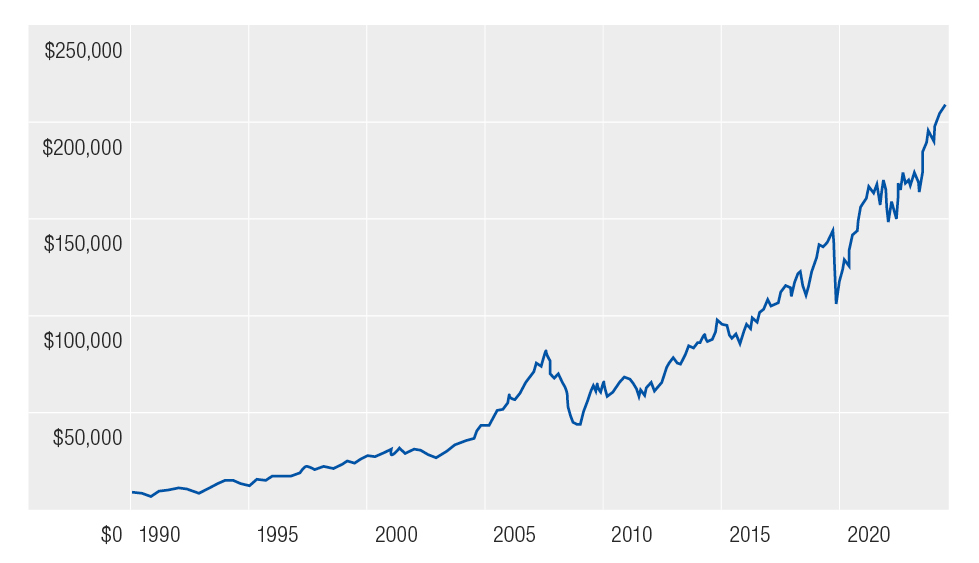
SPRING IS HERE
Spring 2025
Spring is here, bringing longer days and an opportunity to venture outdoors and enjoy the warmer months ahead.
A higher-than-expected jump in inflation figures may prompt the RBA keep interest rates on hold at this month’s meeting. Headline CPI climbed to 2.8%, up from 1.9%. The trimmed mean, the RBA’s preferred gauge of underlying inflation, also rose to 2.7% in July from 2.1% in June.
Markets responded cautiously, though the S&P/ASX 200 still edged higher for the month and notching another all-time high. The rally was driven by mining and banking stocks.
The unemployment dipped slightly to 4.2% in July and business confidence is upbeat. The number of Australian businesses rose by 2.5% over the past financial year to more than 2.7 million. Total wages and salaries increased 5.9 per cent year-on-year. The momentum appears to be lifting consumer sentiment with the Westpac-Melbourne Institute Index posting a solid gain 5.7% in August, a 3.5 year high.
As Aussie dollar finished the month at US65c and continues to be shaped by global factors.
In the US, the S&P 500 hit records highs, led by tech giants, as investors weighed tariff impacts and speculated on future rate cuts.

Strategies for an unexpected retirement
The best time to start planning for retirement is yesterday.
But the second-best time? Today.
About two-thirds of Australians retire earlier than they anticipated because of unexpected events such as job loss or redundancy, they need to care for a family member, have a sudden illness or injury, problems at work or a partner’s decision to retire.i
But, whether you’re in your 50s, 60s, or even beyond, it’s never too late to take meaningful steps toward a more secure and fulfilling retirement.
The good news is that with the right guidance and a few smart moves, you can still build a retirement plan that reflects your values, supports your lifestyle and gives you peace of mind.
Where to begin
Before you make any changes, it’s important to understand your current financial position. This includes:
- your superannuation balance
- other savings or investments
- debts such as your mortgage, credit cards and personal loans
- expected retirement income sources including the Age Pension, rental income and part-time work
Boost your super
Even if you’re starting later, there are ways to accelerate your super growth using:
- Salary sacrifice Contributing pre-tax income into super can reduce your taxable income while boosting your retirement savings.
- Personal contributions You may be eligible for a tax deduction or government co-contribution depending on your income.
- Catch-up contributions You may be eligible to add to your super but be aware of the caps on contributions.ii
These strategies can be especially powerful in your 50s and 60s, when your income may be higher and retirement is on the horizon.
It’s also a good idea to regularly consider your super investment options and review your risk tolerance and time horizon.
Deal with debt
If possible, getting your debt under control before you retire is a useful strategy.
You could consider using your superannuation or other savings or downsize your home to pay off a mortgage or other loans. But first, it’s essential to carefully check the tax impact, the effect on your super and whether any potential government benefits will be affected.
Reassess your lifestyle goals
Retirement isn’t just about money, it’s about how and where you want to live, how much travel you’d like to do and if you’d continue to work part-time.
Clarifying your lifestyle goals helps shape your financial strategy. It also ensures your retirement plan reflects your values, not just your bank balance.
How much will I really need?
Aim to create a retirement budget. Estimate your future expenses including housing, food, travel and healthcare and compare them to your expected income. This helps identify any shortfalls and guides your savings strategy.
You will also need to consider the amount of time you might spend in retirement. This will depend on when you retire (planned or unexpected) and how long you live. This is called longevity risk. Given life expectancy is unpredictable, there is a possibility that your retirement savings may not last throughout retirement.
Understand your entitlements
Many Australians are eligible for government support in retirement, including:
- Age Pension Based on income and assets, available from age 67 (for those born after 1957).
- Concession cards For discounts on healthcare, transport and utilities.
- Rent assistance If you’re renting privately and receive the Age Pension.
Even if you don’t qualify now, you may be able to restructure your finances to maximise future entitlements.
Review regularly and remain flexible
Retirement planning isn’t a one-time event. Life changes and so should your strategy. Regular reviews help you:
- Adjust for market movements or legislative changes
- Update your goals and spending patterns
- Ensure your estate planning is current
Flexibility is key. Whether you retire gradually, take a sabbatical, or pivot to a new venture, your plan should evolve with you.
Next steps
Retirement planning is about taking the next step rather than chasing perfection. Whether you’re starting late or simply refining your strategy, every step you take now helps shape a more secure and meaningful future.
And remember that retirement isn’t an end point. It’s a new beginning even if you retire earlier than you anticipated. With the right plan in place, you can step into this next chapter with clarity, confidence and purpose.
We’d be happy to help you review your current retirement plan and identify any gaps in retirement goals and create a strategy should you need to retire earlier than expected.
ii Understanding concessional and non-concessional contributions | Australian Taxation Office

Tax update September 2025
What’s changing?
While sweeping tax reforms aren’t expected this year, several targeted changes could affect your bottom line.
Tax debt no longer deductible
The ATO is reminding taxpayers the general interest charge (GIC) applied on an unpaid amount of tax or other liabilities after the due date is no longer tax deductible.i
The current rate applied to GIC debts is 11.17 per cent, with the interest charge compounding daily.
Prior to 1 July 2025, GIC could be claimed as a deduction in your tax return, but with the deduction no longer available, small businesses carrying any tax debts will now pay more.
Back pay reporting change
From the start of the 2025-26 tax year, the way that back payments to employees are treated and reported has changed.ii
In previous tax years, back payments accrued more than 12 months prior and exceeding $1,200 were reported at Lump Sum E in Single Touch Payroll (STP) reports.
The $1,200 threshold has now been removed, so all back payments accrued more than 12 months ago must be reported regardless of the amount.
Small Business Clearing House to close
The ATO’s Small Business Clearing House (SBCH) will shut down ahead of the new Payday Super regime launching 1 July 2026.iii
Small businesses with 19 or fewer employees could use the SBCH to pay their quarterly super contributions to the super funds selected by eligible employees.
The ATO says it will provide information to small businesses about transitioning to alternative super payment services, but businesses are being encouraged to take steps towards changing their payment arrangements before 1 July 2026.
Support for new small businesses
The ATO is providing extra support for new small business owners to help them understand and comply with their tax, super and registry obligations.
With around 50 per cent of businesses failing in their first three years, the new Ready for Business Program is designed to help owners get their ATO obligations correct from the start.
ABN holders will receive a series of emails with tips on their ABN obligations, business structure, registering for GST and employer responsibilities.
Focus on GST compliance
The ATO is also encouraging small businesses to set aside their GST payments in a separate bank account to avoid being caught out when it comes time to pay their obligations.iv
Compliance with GST registration and payment obligations remain an ongoing concern for the regulator, with the current annual tax gap estimated to be around $8 billion.
GST registration is compulsory when turnover exceeds $75,000 or if a business provides taxi, limousine or ride-sourcing services.
Notifying SMSF changes
SMSF trustees are being urged to ensure they notify the ATO whenever modifications are made to their SMSF.
Changes related to the fund’s contact details, structure, status or bank account must all be submitted to the regulator within 28 days.
Once the ATO receives the change details, the regulator will send an alert vis SMS or email to safeguard the SMSF against potential fraud or misconduct.
Work-related deductions continue to grow
Release of the annual Taxation Statistics Report for 2022-23 shows work-related expenses continue to dominate the tax deductions claimed by individuals, ensuring the ATO will maintain its current focus on this area.
Work-related expenses accounted for 50 per cent of individual deduction claims, with 10.3 million Australian taxpayers claiming an average of $2,739 per person in 2022-23.
Need help navigating the changes?
If any of these updates affect your business or personal tax situation, please contact us for help to understand your obligations, adjust your reporting processes and to plan ahead.
i ATO reminder on interest deductibility changes from 1 July | Australian Taxation Office
ii The way you treat and report back payments is changing | Australian Taxation Office
iii Small Business Superannuation Clearing House | Australian Taxation Office
iv ATO announces additional support for new small business owners | Australian Taxation Office
From bad reputation to dream destination
When you start researching for a trip overseas it’s easy to be swayed by what can be a lingering bad reputation of a region or country. The landscape of travel is constantly shifting and what may once have been a no-go zone can now be a dream destination – and vice versa.
Some of today’s most compelling places to visit were once dismissed as too dangerous, politically unstable, or simply unattractive. Thanks to urban renewal, political shifts, and the sheer resilience of local communities, these destinations have reinvented themselves and now welcome travellers with open arms.
Here are a few places that were once avoided but now deserve a spot on your bucket list.
Albania: Europe’s little secret
Let’s start with Albania. The once-hermit kingdom of Europe, it spent most of the 20th century shut off from the world under a dictatorship. Today? It’s a Mediterranean dream in disguise.
While tourists crowd into Italy and Greece, Albania’s beaches remain blissfully peaceful. The mountains are rugged, the food is incredible (think olive oil, cheese and stunning wines), and the prices? Almost suspiciously low. It’s a reminder that the best destinations are often the ones that haven’t been given the glossy treatment – yet.
And by going now, you’re not just ahead of the trend, you’re helping shape the nation’s tourism story from the ground up.
Rwanda: The quiet recovery
Few countries have flipped their narrative like Rwanda has. Once known for the horrors of the 1994 genocide, it is now one of Africa’s safest, cleanest, and most forward-thinking destinations. Kigali, the capital, is plastic-free, progressive, and is pulsing with creativity.
But the real magic lies beyond the city. Rwanda’s forests are home to some of the world’s last remaining mountain gorillas and tracking them in Volcanoes National Park is one of the most profound wildlife experiences on the planet. It’s not cheap, but every permit supports conservation and local communities so you can feel good about travelling with purpose.
There’s a quiet pride here and a sense of renewal. And for travellers, it offers that rare thing: a trip that’s humbling, hopeful, and unforgettable all at once.
Sri Lanka: The comeback island
Hop over to Sri Lanka, and you’ll find another country rising from the ashes of conflict and challenges. After decades of civil war, the 2004 tsunami, and an economic tailspin that led to widespread protests in 2022, the island nation has really started to shine as a holiday destination.
From leopard-spotting in Yala National Park to sipping world-class tea in the hill country, the island is a compact slice of paradise. The trains rattle their way through lush green hills, elephants roam wild, and its beaches are postcard perfect. Sri Lanka isn’t hiding its past; it’s simply writing a better future. It’s travel that feels good – and does good.
Vietnam: From conflict to cool
Vietnam is a nation that’s spun a difficult history into a compelling narrative. Once the setting for a war that defined an era, it’s now the backdrop for stunning cuisine and jaw-dropping natural beauty.
But what links Vietnam to places like Sri Lanka is its authenticity. The chaos of Hanoi’s Old Quarter, the sleepy magic of Hoi An, the emerald waters of Ha Long Bay all strike a chord when you remember just how far the country has come.
And yet, prices remain low and you can still find yourself the only tourist at a countryside café sipping egg coffee like a local.
The final boarding call
So, what do these places all have in common? They’re not perfect. And that’s exactly why they’re perfect. Destinations that have overcome hardship – be it conflict, natural disasters, or political upheaval – often offer something more rewarding than your average sun-and-souvenir spot.
These are places where your visit helps fuel recovery, where locals genuinely want to welcome you back, and where the scars of the past give way to a kind of hospitality you won’t find in more polished places.
So, skip the predictable and go where the stories are. Because sometimes, the best places to visit are the ones that were once off the map entirely.
Note: It’s crucial to stay informed about the current safety situation in any destination, even those that have undergone positive transformations.



















